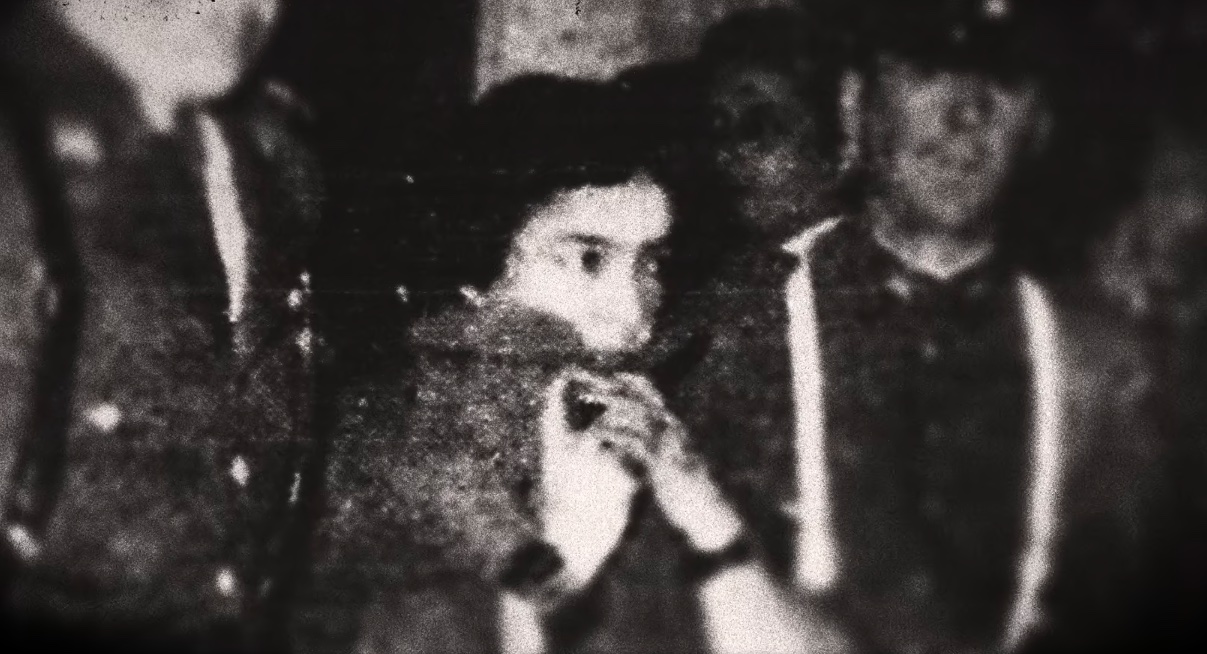Netflix’s historical crime drama film, ‘In Her Place’ (originally titled ‘El Lugar de la Otra’) follows the story of a paralegal named Mercedes. Set in 1955 in Chile, Mercedes’ story develops in the backdrop of a murder trial that baffles the whole country. At the center of the investigation is a famous author named María Carolina Geel, who shot her lover while they were on lunch at an extravagant hotel. As the details about Geel’s life come out, Mercedes finds herself drawn to the woman and her life, which leads to some drastic changes in her own. Directed by Maite Alberdi, the 2024 film is made more interesting by the fact that it uses a real crime to set the foundation of its story.
In Her Place Centers Around María Carolina Geel’s Real Crime

The backdrop of ‘In Her Place’ paints the picture of a real crime committed by María Carolina Geel. The film’s major source of inspiration was Alia Trabucco Zerán’s non-fiction book, ‘When Women Kill’ (Las Homicidas), which recounts four real-life cases where women killed their partners. Geel’s story is one of them. María Carolina Geel was the pseudonym used by Georgina Silva Jiménez, who’d worked as a stenographer before she turned to writing. She’d already published a couple of novels and was a well-known writer when the murder happened. When she killed her lover, Roberto Pumarino, who was 14 years younger than her, while dining with him in Hotel Crillón in Santiago, Chile, on April 14, 1955, she gained a notoriety that wouldn’t leave her for the rest of her life.
According to the reports of the case, Geel used a 6.35-caliber Belgian revolver to shoot Pumarino five times in the face. The man died on the spot, while Geel stood silently in her place until the authorities showed up and she was apprehended. While there was no doubt about the fact that Geel had killed Pumarino, what really intrigued people was the reason behind her actions. Geel confessed to the crime and told the authorities everything she was asked except why she committed the murder. The lack of any explanation from her led the media and the public to speculate, and the general consensus was that Geel was not mentally well when she murdered the man she loved. At the end of the day, Geel was sentenced to three years in prison. However, she was pardoned by the President soon after, with people like Nobel Prize winner for literature Gabriela Mistral writing on her behalf.

Geel was out of prison in 1956, but by that time, she had already spent enough time in prison to write and publish a book titled ‘Women’s Prison’ (‘Cárcel de Mujeres’). It was part fiction, part autobiographical, based on Geel’s own experiences in prison and became one of her most acclaimed works. Following her time in prison, she continued to write prolifically. She produced several more novels and wrote columns and articles for magazines and newspapers. Her infamy fed her popularity. However, the shadow of her crime never left her as the question of her motive was asked repeatedly. Despite all this, she stood steadfast in her decision to never reveal why she killed Pumarino. She took the secret to her grave, dying on January 1, 1996, after living with Alzheimer’s in the last few years of her life.
The Fictional Mercedes is the Focus of In Her Place
While Geel’s crime in ‘In Her Place’ is a reflection of a real-life murder, the film keeps it in the background and puts the character of Mercedes in the spotlight. She is an entirely fictional character created by screenwriters Inés Bortagaray and Paloma Salas, who penned the screenplay of the film. The reason behind the creation of a fictional character while following a real-life crime was to refrain from adding fictional explanations to Geel’s story. Director Maite Alberdi explained that while she and the writers were fascinated with Geel’s case, they didn’t want to make things up when it came to explaining her side of the story. Geel never explained her crime to anyone, and the creators of the film didn’t want to force an explanation through the story. Instead, they used a different approach.

Alberdi revealed that the intention was to follow the story from the point of view of a witness rather than the murderer. Because of Geel’s silence, a lot of what is known about the case comes from what other people said about it. Alberdi wanted to bring this outside perspective to the film while creating a connection between the fictional character and the real-life murderess. Referencing Virginia Woolf’s ‘A Room of One’s Own,’ the director said that, through Mercedes, she wanted to focus on the importance of personal space in a person’s, especially a woman’s, life.
Mercedes feels choked by her family life, which takes too much out of her while giving barely anything in return. When she finds herself in the space left behind by Geel, she discovers a freedom she hadn’t before, which leads to some very interesting situations. Through her, the film presents a character that the audience can relate to, making them question what they would do if they were in her place. So, despite the fictional nature of Mercedes’ character, the audience not only sympathizes with her but sees themselves reflected in her life and actions, giving them a lot of food for thought.
Read More: Best Thriller Movies on Netflix


You must be logged in to post a comment.